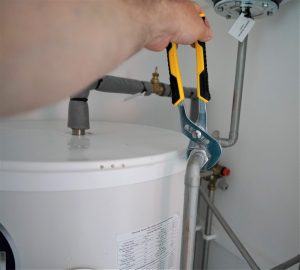Community solar programs allow individuals to access clean energy without installing home solar panels on their property. These programs are suitable for those who have homes with limited sunlight exposure or lack of roof space. With community solar, homeowners can contribute to reducing their carbon footprint while enjoying the benefits of renewable energy. Here are several community solar program options:
Table of Contents
ToggleSubscription-based Models
Enrolling in a subscription-based model is an option for homeowners looking to participate in community solar programs. This model allows homeowners to subscribe to a certain amount of energy from a community solar project, typically for a fixed period. Under this model, homeowners do not need to invest in equipment or pay significant upfront costs. They can sign up for a subscription with a community solar provider and receive credits on their utility bills for the energy produced by the project.
Ownership-based Models
The ownership-based model is a community solar option where homeowners can purchase a set number of solar panels. These solar panels are installed in a central location within the community. This allows homeowners to directly own and benefit from the energy produced without installing home solar panels on their own roofs. In this model, homeowners have control and responsibility over their solar panels, as they are owners rather than subscribers.
Community Solar Gardens
Community solar gardens can follow a subscription-based model, an ownership-based model, or a combination of the two. They allow multiple homeowners to come together and invest in a single solar project, sharing the costs and benefits equally. Third-party entities, such as solar developers, utility companies, or community organizations, can also develop solar gardens. Community solar gardens are beneficial because they allow those without the means or ability to install solar panels to access clean energy. They may also promote a sense of community involvement and shared responsibility.
Benefits of Community Solar Programs
Communities can benefit from shared solar programs in various ways, including offering solar energy access to renters. The programs allow community members to access clean and renewable energy without installing a system of solar panels on their property. Community solar programs often provide cost savings. By pooling resources with other homeowners, the overall cost of solar energy generation and maintenance can be lower. The solar programs may offer short-term contracts, making it easier for homeowners to join and exit if needed.
By participating in community solar programs, homeowners also contribute towards reducing their carbon footprint and promoting a more sustainable environment. Being part of a community solar program gives homeowners more control over their nonrenewable energy usage. This helps minimize the use of traditional means of generating electricity.
Things To Assess Before Joining a Community Solar Program
Before joining a community solar program, homeowners need to assess their energy needs. This includes estimating how much energy they currently use and determining whether the community solar program can meet their needs. They should evaluate any upfront costs or financial commitments that may be required to join the program. Homeowners can also review the location of the solar panels and assess whether there will be enough sunlight throughout the year to generate sufficient energy.
Make a Switch to Community or Home Solar Panels
Joining a community solar program offers homeowners an opportunity to contribute towards a cleaner and greener environment. Using solar energy reduces carbon emissions and gives homeowners increased control over nonrenewable energy usage. From community solar gardens to subscriptions and ownership-based models, homeowners can choose the solar program that meets their energy and financial needs. They can also install their own home solar panels if their property is a suitable fit. Contact a solar energy professional today to learn more about the requirements of installing home solar panels.
More Stories
Understanding Cybersecurity Risks: A Comprehensive Guide
In today’s interconnected world, cybersecurity is no longer an optional consideration—it’s a necessity. With businesses, governments, and individuals increasingly relying...
Unlocking Efficiency: How Contract Management Systems Enhance Business Operations
In the ever-evolving business landscape, maximizing efficiency is paramount. With organizations facing mounting complexity and competition, streamlining contracts processes and...
Understanding the CDK Cyber Attack: Implications, Causes, and Future Cybersecurity Threats
In recent years, cybersecurity has become a top priority for businesses and organizations worldwide. The digital landscape is continually evolving,...
Unveiling Crypto-Legacy.App Software: The Future of Cryptocurrency Management
In the rapidly evolving world of cryptocurrency, innovative software solutions are crucial for investors and traders alike. One of the...
How can I Install and setup a keyless entry system?
Are you thinking of improving your home’s security? Think of installing a keyless entry system. These systems provide better security...
How to Control IoT Devices: A Comprehensive Guide
The Internet of Things (IoT) is revolutionizing the way we interact with technology. From smart homes to industrial automation, IoT...


